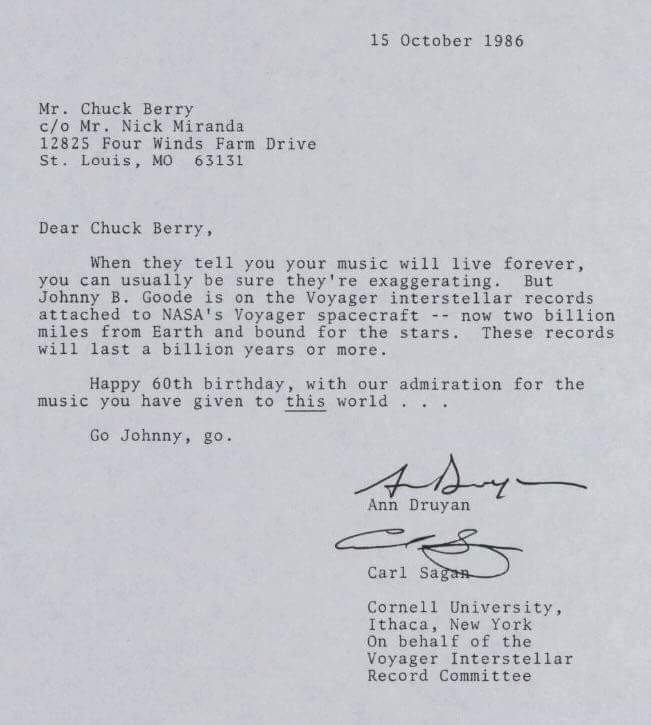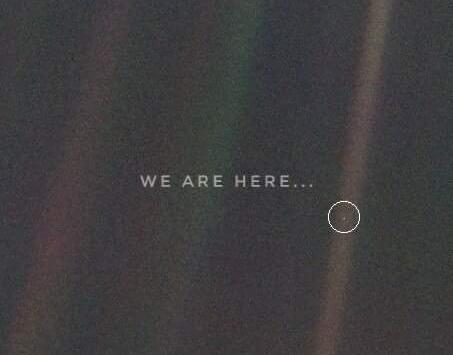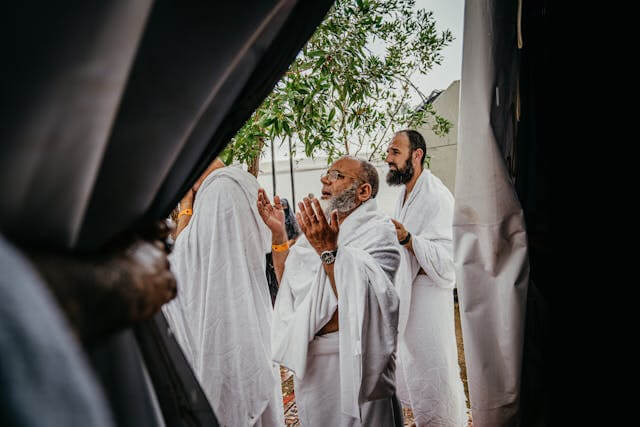Voyager 1 is the farthest space probe and human-made object from Earth, which launched on September 5, 1977, and is headed for interstellar space, having operated for 41 years, 10 months and 18 days as of July 23, 2019. The picture below was captured on February 14, 1990, by Voyager 1, as the spacecraft left our planetary neighborhood for the vastness of the solar system, engineers turned it around for one last look at its home planet.
Carl Sagan, a renowned American cosmologist and astrophysicist wrote about this “Dot” in his book, “Pale Blue Dot: A Vision of the Human Future in Space”.
“Look again at that dot. That’s here. That’s home. That’s us. On it everyone you love, everyone you know, everyone you ever heard of, every human being who ever was, lived out their lives. The aggregate of our joy and suffering, thousands of confident religions, ideologies, and economic doctrines, every hunter and forager, every hero and coward, every creator and destroyer of civilization, every king and peasant, every young couple in love, every mother and father, hopeful child, inventor and explorer, every teacher of morals, every corrupt politician, every “superstar,” every “supreme leader,” every saint and sinner in the history of our species lived there-on a mote of dust suspended in a sunbeam.
The Earth is a very small stage in a vast cosmic arena. Think of the endless cruelties visited by the inhabitants of one corner of this pixel on the scarcely distinguishable inhabitants of some other corner, how frequent their misunderstandings, how eager they are to kill one another, how fervent their hatreds. Think of the rivers of blood spilled by all those generals and emperors so that, in glory and triumph, they could become the momentary masters of a fraction of a dot.
Our posturings, our imagined self-importance, the delusion that we have some privileged position in the Universe, are challenged by this point of pale light. Our planet is a lonely speck in the great enveloping cosmic dark. In our obscurity, in all this vastness, there is no hint that help will come from elsewhere to save us from ourselves.
The Earth is the only world known so far to harbor life. There is nowhere else, at least in the near future, to which our species could migrate. Visit, yes. Settle, not yet. Like it or not, for the moment the Earth is where we make our stand.
It has been said that astronomy is a humbling and character-building experience. There is perhaps a no better demonstration of the folly of human conceits than this distant image of our tiny world. To me, it underscores our responsibility to deal more kindly with one another, and to preserve and cherish the pale blue dot, the only home we’ve ever known.”
Voyager 1 is dropping power supply, which means it will stop transmission by 2025 (approx.) and there will be no data flow back from that distant location.
There is a set of two phonograph records called Voyager Golden Records, that were included onboard of both Voyager 1 and Voyager 2 space probes. The records contain sounds and images selected to portray the diversity of life and culture on Earth and are intended to reveal a sign of 1970s life on planet Earth for any intelligent extraterrestrial life there in space, or for future humans, who may find them. The records are a sort of time capsule.
Carl Sagan believed and said that “The spacecraft will be encountered and the record played only if there are advanced space-faring civilizations in interstellar space, but the launching of this ‘bottle’ into the cosmic ‘ocean’ says something very hopeful about life on this planet.”

PS: If you want to check the live status of Voyager 1 and Voyager 2. Open this Link: https://voyager.jpl.nasa.gov


























Leave a Reply